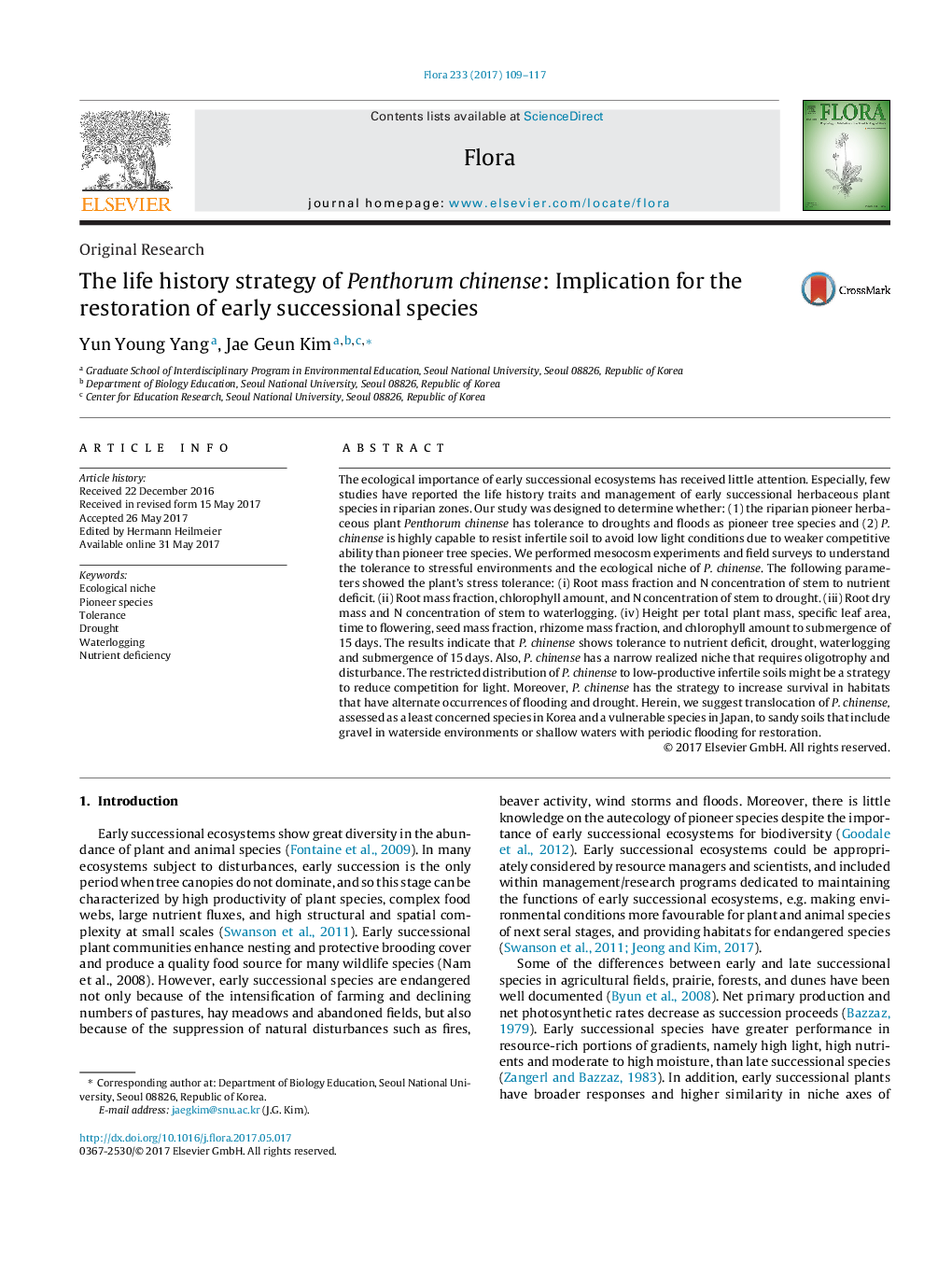| Article ID | Journal | Published Year | Pages | File Type |
|---|---|---|---|---|
| 5532405 | Flora - Morphology, Distribution, Functional Ecology of Plants | 2017 | 9 Pages |
â¢Penthorum chinense is a pioneer species in riparian zones.â¢P. chinense has a narrow realized and broad fundamental niche.â¢P. chinense shows tolerance to nutrient deficit, drought, waterlogging, and submergence of 15 days.
The ecological importance of early successional ecosystems has received little attention. Especially, few studies have reported the life history traits and management of early successional herbaceous plant species in riparian zones. Our study was designed to determine whether: (1) the riparian pioneer herbaceous plant Penthorum chinense has tolerance to droughts and floods as pioneer tree species and (2) P. chinense is highly capable to resist infertile soil to avoid low light conditions due to weaker competitive ability than pioneer tree species. We performed mesocosm experiments and field surveys to understand the tolerance to stressful environments and the ecological niche of P. chinense. The following parameters showed the plant's stress tolerance: (i) Root mass fraction and N concentration of stem to nutrient deficit. (ii) Root mass fraction, chlorophyll amount, and N concentration of stem to drought. (iii) Root dry mass and N concentration of stem to waterlogging. (iv) Height per total plant mass, specific leaf area, time to flowering, seed mass fraction, rhizome mass fraction, and chlorophyll amount to submergence of 15Â days. The results indicate that P. chinense shows tolerance to nutrient deficit, drought, waterlogging and submergence of 15Â days. Also, P. chinense has a narrow realized niche that requires oligotrophy and disturbance. The restricted distribution of P. chinense to low-productive infertile soils might be a strategy to reduce competition for light. Moreover, P. chinense has the strategy to increase survival in habitats that have alternate occurrences of flooding and drought. Herein, we suggest translocation of P. chinense, assessed as a least concerned species in Korea and a vulnerable species in Japan, to sandy soils that include gravel in waterside environments or shallow waters with periodic flooding for restoration.
